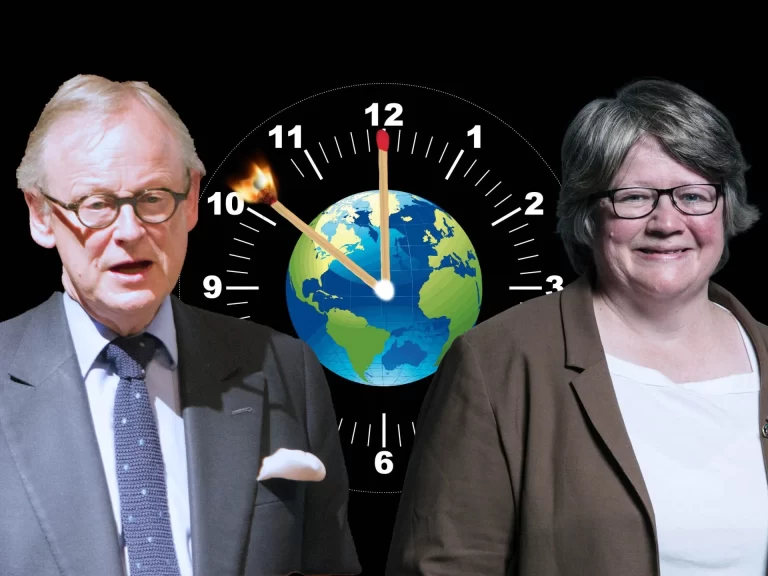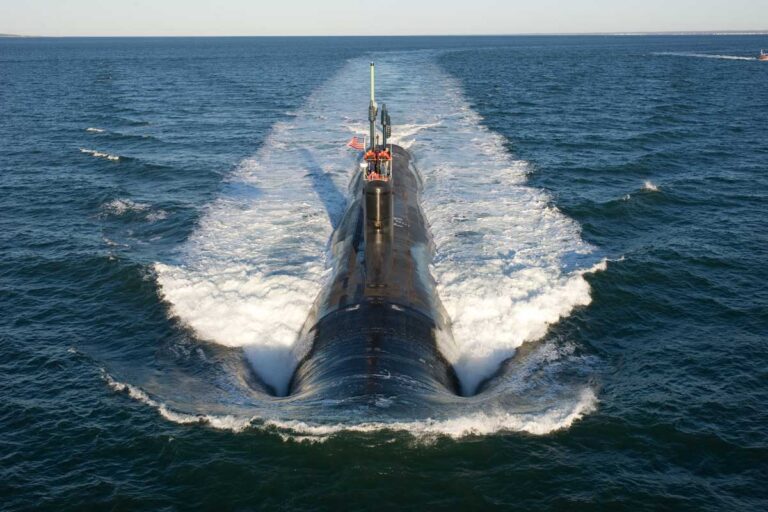Amtrak will soon get 28 high-speed rail cars. But they won’t operate at high speeds because Amtrak tracks are outdated
CLIMATEWIRE | The first U.S.-made high-speed “bullet” trains will start running as early as 2024 between Boston, New York and Washington, with the promise of cutting transportation emissions by attracting new rail passengers who now drive or fly.
But Amtrak’s plan to run high-speed rail service on its Northeast Corridor faces a major obstacle — the 450-mile route does not have modern tracks that can handle the speed.
Amtrak, a federally owned passenger-rail company, will have to operate the new trains on tracks that were built more than a century ago for much slower commuter and freight service. The bullet cars will be forced to run slower than 110 mph in most segments.
Many European and Asian countries operate high-speed trains around 200 mph on special tracks designed for faster speeds and closed to slower rail cars.
The old rail infrastructure highlights difficulties the Biden administration faces in bringing high-speed passenger rail service to the United States. President Joe Biden last year vowed to help develop high-speed rail as one of 37 “game-changing R&D opportunities” that could help the United States achieve net-zero carbon emissions by 2050.
E&E News identified four obstacles that complicate Biden’s efforts to bring to the U.S. a high-speed rail system that can reduce driving and flying — the two most polluting and common transportation modes in the United States. The problems are intertwined, with one issue complicating the next. They include:
- Tracks: None of the nation’s rail lines are built for trains to run 200 mph. Amtrak’s Northeast Corridor — the busiest intercity U.S. passenger route by a wide margin — is filled with sharp curves, bottlenecks, decaying tunnels, bridges and overhead power lines that slow down trains. The corridor needs billions of dollars for basic improvements and to accommodate high-speed service.
- Buy America: The policy requires federally funded infrastructure including rail cars and tracks to be manufactured domestically. The rules could slow down high-speed rail projects and increase costs because U.S.-made parts are generally costlier and manufacturing capacity is limited, although Buy America waivers are possible.
- Domestic rail industry: The U.S. lacks a passenger rail industry that can produce all of the parts needed for a high-speed rail system and comply with Buy America. In addition, the tracks, signals, rail cars and software made in the U.S. are costlier than imports, largely because the government has not funded rail the way European and Asian countries have, experts say.
- Money: Congress and the White House have not created an annual program that would help establish a domestic rail industry to produce rail cars, tracks and components and meet Buy America requirements.
Building a national high-speed rail network requires decades of annual appropriations similar to the funding stream that built the interstate highway starting in the Eisenhower administration, said Louis Thompson, a former director of the Federal Railroad Administration and a member of the California High-Speed Rail Peer Review Group.
“Until we are serious about high-speed rail in the same way that we were serious about the interstate highways, we’re highly unlikely to see a national high-speed rail system,” Thompson said.
A federal funding program for high-speed rail would encourage U.S. companies to invest in research, engineering and new plants that could produce high-speed rail parts and satisfy Buy America requirements, Thompson said.
The interstate highway system cost $129 billion — roughly $290 billion in current dollars — and took 35 years to complete, running from 1957 to 1992. The $1.2 trillion infrastructure bill enacted in 2021 has $102 billion for rail, but none of the money is set aside for high-speed rail.
High-speed rail could reduce emissions from intercity travel under 600 miles. Bullet trains can take passengers directly to city centers, which makes total travel time on trains similar to or faster than air travel.
Trips on bullet trains emit about 14 to 16 times less carbon per passenger than trips by car or airplane, according to a report that evaluated the carbon footprint of transportation options in southern France. Transportation is the largest source of planet-warming gases in the United States, releasing 28 percent of U.S. carbon emissions, according to EPA. Trucks and passenger cars account for 81 percent of transportation emissions.
Samantha Silverberg, a deputy infrastructure implementation coordinator at the White House, said in an email that Biden is delivering “long-overdue projects to modernize Northeast Corridor,” and characterized the administration’s investment as a “game changer” for the rail line.
The U.S. does not have high-speed rail under definitions set by the International Union of Railways, a professional association representing the rail industry. The group defines high-speed rail as trains that travel faster than 155 mph on special tracks. The definition includes trains that run on standard tracks, if trains can cruise faster than 125 mph in most segments.
19TH-CENTURY TUNNELS, CENTURY-OLD BRIDGES
On Amtrak’s express Acela service between Boston and Washington, old tracks and overhead power lines will prevent the new high-speed cars from running at high speeds, said Scott Sherin, vice president of Alstom USA. The company, owned by French rail manufacturer Alstom, is building 28 high-speed trains that Amtrak bought in 2016 with a $2.45 billion federal loan.
In Baltimore, trains crawl through a 150-year-old tunnel at 30 mph, making sharp turns before entering the structure built during Ulysses S. Grant’s presidency. The Susquehanna River Bridge in northern Maryland has been operating since 1906 without major overhauls, limiting train speed to 90 mph. In Connecticut, the rail tracks wind through coastal towns, slowing down travel between Boston and New York.
Amtrak’s new rail cars can tilt at curves to maintain high speeds, but many curves are too sharp even for the most modern technology, Thompson said.
“The fact that that stuff will tilt doesn’t make any difference,” Thompson said.
Currently, only 32 miles of tracks on the Northeast Corridor can handle speeds up to 160 mph. Amtrak plans to make an additional 100 miles of tracks capable of handling bullet trains in the next 12 years. The expansion would enable bullet trains to hit 160 mph in roughly 30 percent of the rail route by 2035, a full decade after they start operating.
Amtrak decided to buy high-speed rail cars because its Acela trains are “at the end of their useful life” and new cars would cost less than fixing the cars used on its Acela line.
In 2021, Congress increased federal funding for rail improvements and repairs more than eightfold to $102 billion through the Infrastructure Investment and Jobs Act.
But the act, which authorizes funding for five years, provides only about a quarter of the money Amtrak needs for track improvements in the next 15 years, according to Amtrak’s legislative report to Congress.
Modernizing tracks in the Northeast Corridor, for example, would cost $117 billion, mostly to repair tracks and increase capacity. The cost estimate does not include building special high-speed tracks.
“Most of the money (from the act) goes in fixing stuff, which is really not high-speed related,” Thompson said.
Amtrak said that expanding capacity and fixing infrastructure would make “the biggest improvements in trip time.”
The track improvements between Boston and Washington will cut travel time by an hour, to about 5 ½ hours. High-speed trains in Europe and Asia currently take around three hours to travel similar distances.
‘RESTRICTIVE’ BUY AMERICA IGNORES REALITY OF U.S. INDUSTRY
In California, the state’s high-speed rail authority has yet to secure about two-thirds of the funding required to complete a 520-mile high-speed route between Los Angeles and San Francisco. The entire project is estimated to cost $128 billion.
Republican opposition in Congress to rail funding is another roadblock for bullet trains. In July, the GOP-led House Appropriations Committee passed a fiscal 2024 spending bill that would prohibit the Transportation Department from funding the California project and cut Amtrak’s funding by $1.5 billion.
Since taking office, Biden has vowed strict adherence to Buy America provisions, but rail experts say the U.S. does not have an industrial base that can build all high-speed rail parts.
“Buy America provisions … are restrictive and don’t recognize the reality of the U.S. industrial base for rail equipment,” said Jim Mathews, the president of the Rail Passengers Association. The U.S. “cannot afford to unilaterally shut out (foreign) suppliers” of high-speed rail parts.
The new Amtrak trains are three years behind schedule partly because many of the Alstom U.S suppliers faced supply chain issues with rail parts, Sherin of Alstom said. Buy America requirements “revealed the fragility” of its U.S. supply chain for rail, Sherin added.
Amtrak’s new Alstom trains received a waiver from Buy America requirements in November 2015, allowing the company to import parts, including aluminum shells for the cars and brakes that are crucial for safety and speed.
Its waiver from the Transportation Department says none of the six potential U.S. suppliers “currently manufacture brake systems for HSR trains.”
“It’s a great idea,” Thompson said of Buy America. “But nobody then says, ‘Oh, by the way, we’re going to increase the money available to the project by 20 percent.’”
Source: Scientific American







